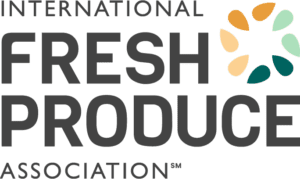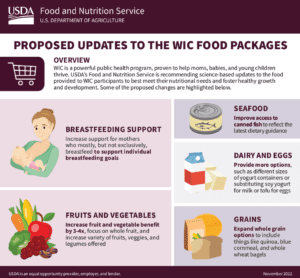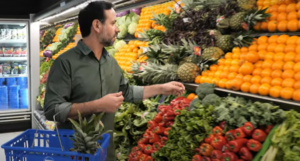Feb 24, 2023IFPA advocates for fresh produce in WIC, ‘healthy’ products
The International Fresh Produce Association (IFPA) has responded to proposed revisions to Women, Infants, and Children (WIC) food packages and efforts to define “healthy” for nutrient content claims.
The U.S. Department of Agriculture’s Food and Nutrition Service sought feedback on better alignment of WIC’s food packages. IFPA encouraged USDA to implement the rule as a whole and to not make changes that may hinder the integrity of the strong, science-based proposed food packages that have been put forth.


“Updating the WIC food packages, which IFPA supports, is one of the most significant steps taken to implement new national nutrition strategy unveiled by the White House last September,” Mollie Van Lieu, IFPA vice president of nutrition and health, in a news release. “Not only will the updates positively impact the health and nutrition of the 4.9 million women and children who will receive enhanced fruit and vegetable benefits, but it makes Dietary Guidelines for Americans’ (DGA) guidance of ‘making half your plate fruit and vegetables’ a reality by allocating half the benefit for produce — a target only 10% of Americans of any income level currently attain.”


IFPA also recommends the agency:
- Maintain elevated WIC Cash Value Benefits (CVB) throughout implementation and avoid “all or nothing” limitations as food packages are updated.
- Further align the program with DGA guidance of consuming “mostly whole” (including fresh-cut) by defaulting to a higher-value CVB and allowing juice as an “opt-in” substitution.
- Allow swapping of jarred infant fruits and vegetables for whole and fresh-cut fruits and vegetables for infants ages 6-11 months.
- Promote equity and nutrition security and the support for cultural and traditional foods and preferences in the updated food packages.
- Consider implementation needs of state and local WIC agencies and retailers when finalizing the updated food packages.
Responding to the FDA’s proposed definition of “healthy,” IFPA cited data that finds more than half of consumers look at the Nutrition Facts Panel or ingredient list “often” or “always” when making a purchasing decision, and approximately 40% say they consider other labeling statements about health or nutrition benefits.
“Food and nutrition labeling touches every consumer regardless of socio-economic status,” Van Lieu said in the release. “While we must focus on those who are most nutrition insecure, almost all Americans under-consume fruits and vegetables.
“Every time a consumer seeks nutritious food and is sold a food or beverage that undermines their health, it is a missed opportunity to reduce diet-related disease,” she said in the release. “Labeling transparency is a valuable tool for assisting consumers in making healthful choices and following dietary guidance.”


IFPA provided feedback on specific areas the agency should address through its proposed rule:
- Raw fruits and vegetables. IFPA supports FDA’s proposed decision to include all raw, whole, fruits and vegetables as meeting the “healthy” definition as well as encourages FDA to take special consideration to ensure that individual servings of whole fresh produce that are cut, sliced, diced and cubed for convenience, and have no added nutrients to limit, are not excluded.
- Processed vegetable and fruit products. IFPA encourages FDA to consider commonly consumed amounts of products containing fruit and vegetable purees, pastes, powders and dried products and only extend a healthy label if they are aligned with dietary guidelines. IFPA also raised the issue that there are many products in the marketplace today that contain insignificant amounts of fruit and vegetable powders and purees yet imply otherwise.
- Added sugars. IFPA supports FDA’s proposal to not allow added sugar allowances to meet the “healthy” criteria.
- Juice products. IFPA raised concerns around the agency’s decision to allow the “healthy” definition to extend to 100% fruit juice. The DGA recommendations for fruits and vegetables encourages “mostly whole” (which includes fresh-cut) and encourages limits around juice consumption. FDA’s proposal as currently written does not provide a mechanism to communicate to the consumer at point of selection that juices should be limited. Given the DGA recommendations to consume mostly whole fruits and vegetables, the agency must be mindful of whether a healthy claim could drive consumers to select juices over whole or cut fruit and vegetables.
- Infants and children under two years old. IFPA strongly encourages FDA to consider how juice products that meet the updated “healthy” definition, like 100% fruit juice, but are not recommended for children under 12 months and should be limited for children under age two (according to DGA), would realistically be perceived to consumers at the point of sale.
IFPA also urged FDA to address the issue of deceptive or misleading labeling through disclosures and declarations that clearly indicate to the consumer the actual amount of fruits and vegetables per serving, and whether the fruit or vegetable is in its whole form. If a product contains a fruit or vegetable flavoring and not real fruits or vegetables, that should be disclosed.
“While outside the scope of the proposal, we encourage FDA to take additional actions to improve dietary quality for consumers through effective labeling and appreciate the agency’s commitment to explore front of package labeling options,” Van Lieu said in the release. “More must be done to address diet-related disease through labeling transparency.
“We encourage the FDA to review the most frequently employed claims with implications for public health, including “made with” and “contains real fruit” claims, the use of misleading images of whole fruits and vegetables when only minuscule amounts are in a serving, and the use of misleading titles for categories of foods that are unhealthy or are minimally nutritious foods.”














